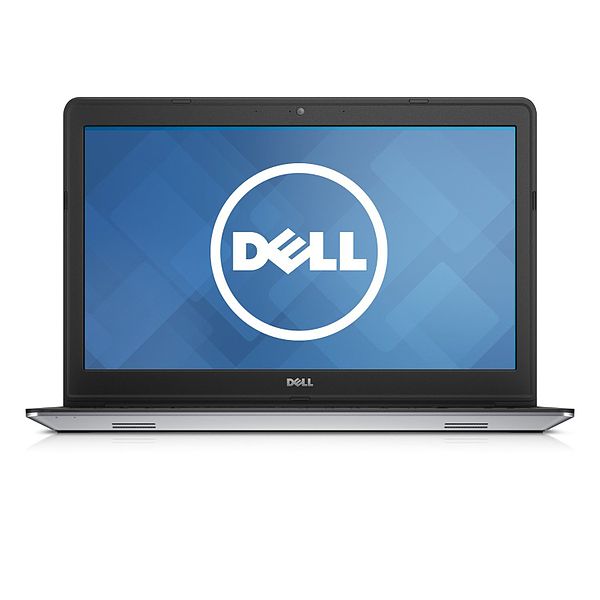An Overview of Dell’s Supply Chain Strategy
Post on Tuesday, December 4th, 2018 in Accounting

Dell entered the market in 1985, and evolved from a small, dorm-room based company in Texas to one of the world’s leading computer hardware manufacturers, with over 96,000 employees.
Among other things, the brand owes a lot of its success to its revolutionary supply chain strategy. Let’s take a look inside Dell’s supply chain and see how it helped the company grow at a rapid pace from the start, and reinvent itself later on.
To get started, let’s take a look at the key achievements of Dell:
- 1984: The company was founded by Michael Dell in Austin, Texas.
- 1985: The company produced the first computer of its own design and sold it for $795.
- 1988: Dell Computer’s market capitalization grew from$30 million to $80 million as a result of an IPO of 3.5 million shares at $8.5 per share.
- 1992: The company is featured in the world’s top 500 largest companies by Fortune magazine.
- 1996: The future retail giant started selling computers directly via its website and embraced the B2C market.
- 1997 to 2004: Period of stable growth, when Dell surpassed its main competitors: AST Research Compaq, Gateway, IBM and Packard Bell.
- 2002 to 2003: The company started manufacturing digital audio players, handhelds, printers and TV sets in addition to computers. To recognize this expansion, the company was rebranded from Dell Computer Corporation to “Dell Inc.” in 2003.
- 2005: Dell was ranked as “The Most Admired Company” by Fortune magazine.
- 2010: Dell switched from a one-size-fits-all to a segmented supply chain model.

Unfortunately, the company faced a series of challenges and disappointments after 2005, such as slow sales, losses to competitors and new technologies along with the decline of the PC industry. But despite these hardships, Dell Inc. still maintains a large market.
In other words, it’s still worth seeing how the Dell supply chain strategy keeps the company afloat.
Dell Supply Chain Models, Explained
The most remarkable feature of Dell’s supply chain management is its direct sales model, meaning that it accepts orders directly from the customers, without any resellers involved.
This model helped the company access its customers and study their needs directly. Based on this data, the brand implemented additional products and services according to customers’ preferences. This made it stand out among other computer hardware manufacturers early on.

Another model that led Dell to success is the make-to-order model:
Here’s a brief overview of how it works:
- Customer place orders on Dell’s website. In this order, the customer specifies their requirements, like the computer configuration and specifications.
- The customer’s requirements are forwarded to the manufacturing department.
- The assembly of the custom PC begins.
- The computer is ready and shipped to the customer.
This model brought the retailer a range of competitive advantages, such as low inventory carrying costs and the ability to quickly replace defective components as they are detected.
However, due to the growth of innovative technologies and changes in the computer industry, the customers changed their needs as well. Customization was no longer crucial for them.
So in 2010, the company reinvented its supply chain and shifted to the segmented model that targeted several groups of customers with different needs and buying capacity.
The brand learned the following lessons:
- Give customers more flexibility and choices, as one size almost never fits all.
- Adjust the solutions to the customer’s needs and requirements.
- Make the products and processes simpler but more efficient.
- Focus on continuous improvement.
The core of the brand’s success in its earlier years was its relationships with the customers and ability to hear their needs, and the reinvention of Dell’s supply chain was focused mostly on customer relationships.
Dell Supply Chain Strategy, Reinvented
To restructure its supply chain, the company implemented the following solutions:
- Global structure instead of regional structure, with three business units – enterprise, public, and consumer/small business.
- Standardized offers including the most frequently purchased configurations.
- Segmented model instead of a one-size-fits-all model.
- Infrastructure that corresponds to the changing needs of the business.
- Standard yet flexible processes that leverage global partnerships.
- Customer priorities aligned according to speed, choice and cost.
- Ready-made, in-stock systems for quick delivery.
- Optimization of global IT infrastructure.
Dell’s renovated supply chain model groups the customers and products chosen by them into the following key segments:
- Customers with specific needs – configurable products
- Customers that choose the company as a trusted advisor – preconfigured products
- Customers that value speed – finished goods purchased either directly or through the website
Accordingly, the brand implemented different supply chains targeting these groups of customers. However, all of the chains were using the same tools, processes and suppliers.

Dell’s Suppliers and Inventory Management
Like other retail giants, Dell has long-term relationships with suppliers that help the brand streamline their inventory management as well. The company considers its vendors to be an integral part of its success.
The key objective of Dell’s inventory management is to minimize the inventory and optimize the production speed. As a result, the company does not hold inventory for more than 6 days and avoids unnecessary carrying costs.
The retail giant has got suppliers from all over the world, including major companies such as Motorola, Samsung, Sony and more. All of them supply the components – HDDs, cables, motherboards, etc. according to a set of rules provided by Dell.
For example, it is strongly advised that each supplier have a manufacturing plant near Dell’s plant. The suppliers should also cooperate with logistics companies that can both deliver the components and ship the customer orders. Finally, the company manages its inventory based on the VMI model, meaning the supplied components are kept on the truck only and taken as needed while the vendor manages the inventory.
Dell and its suppliers communicate with each other via an internal website called Value Chain. At this website, the companies can access information about the inventory status within the supply chain as well as get demand and production data.
The Bottom Line on Dell’s Supply Chain
To summarize, Dell has been a successful player in the computer hardware market since the very beginning because of its innovative supply chain strategies.
Despite the hard times in the early 2000s, its customer-centric model helped Dell remain afloat. In 2010, the retailer reinvented its supply chain according to the changing needs of its target audience. That just goes to show that renewing and improving your supply chain strategy continuously can go a long way.
If you want to use the lessons that Dell learned and lead your business to success, it is important that you efficiently manage your inventory. For that, Dynamic Inventory is ready to help by offering multifunctional but easy-to-use inventory management software. Contact us today and learn more about how we can help improve your supply chain.

Adam is the Assistant Director of Operations at Dynamic Inventory. He has experience working with retailers in various industries including sporting goods, automotive parts, outdoor equipment, and more. His background is in e-commerce internet marketing and he has helped design the requirements for many features in Dynamic Inventory based on his expertise managing and marketing products online.
Learn how Dynamic Inventory can streamline your business today!
Schedule a DemoRelated Articles
see all
An Overview of Dell’s Supply Chain Strategy
Dell entered the market in 1985, and evolved from a small, dorm-room based company in Texas to one of the …

How to Improve Your Warehouse Management System
A warehouse is not only a place to store your inventory. It also hosts all of the important logistics and …

How To Write Product Descriptions That Actually Convert To Sales
A product description should not just be a bland list of a product’s features. After the price of an item, a …

